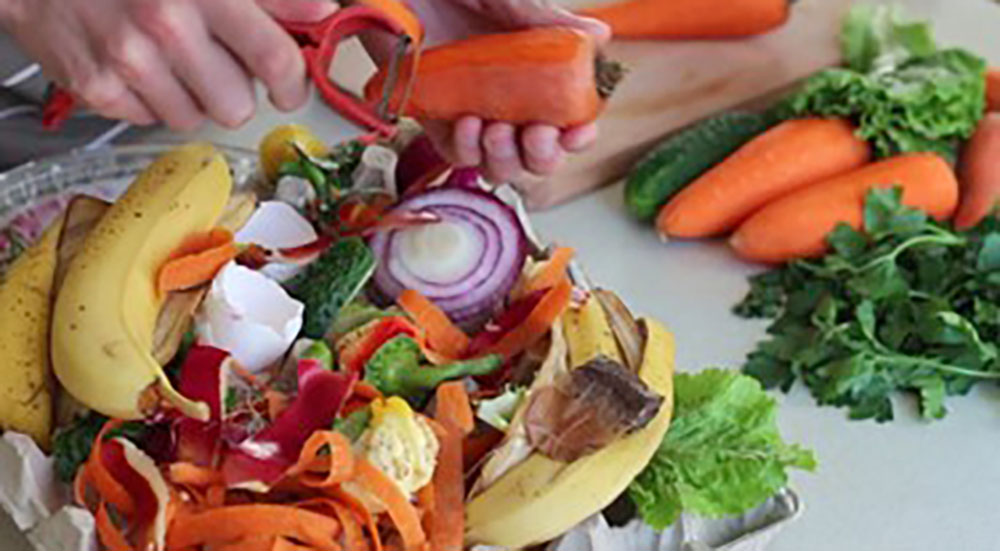What if changing a simple daily habit, such as composting, could have large scale benefits on the environment? Food is the single largest category of material placed in municipal landfills. Not only does food waste in the landfill lead to an increase in greenhouse gas emissions, but it also leads to the use of water, energy and labor that could have been used for other purposes.
Keeping food out of landfills can help fight climate change. Even if meal planning to reduce food waste is part of the routine, there are certain foods that just do not get eaten, like banana peels and coffee grounds. Composting may be an alternative practice that can turn routine kitchen waste into a good thing.
What is composting?
Composting is a natural recycling process. Food waste and lawn trimmings are broken down by naturally occurring bacteria and fungus in the soil to form compost, a nutrient-rich soil amendment or mulch. Often referred to as “black gold” by farmers, compost builds healthier soil, prevents soil erosion, conserves water and improves plant growth.
Composting can be both easy and rewarding. Understanding the basic process can help make composting a success. The following information will focus primarily on backyard composting.
Use these steps to get started
- Select food scraps. Start with fruits and vegetables. Include tea bags, coffee grounds and eggshells. Avoid the foods that attract pests (meat and dairy products, cooked food, oil things, buttery things and bones).
- Store the food scraps. A container is needed to gather the scraps so they can be added bit by bit to the compost mixture. Fancy containers are unnecessary. An old milk carton can do the trick. Food scraps can also be stored in a bag in your freezer or in the back of the fridge.
- Choose a place to make the compost. Anyone can compost regardless of living situation. Backyard composting with a pile or a bin is the most common method but requires a designated space. While many choose to keep the compost in a bin, it is unnecessary. A designated area to create a pile outside will also produce results. It is possible to purchase inexpensive bins. If outside space is limited, consider participating in a local community-based composting program or vermicomposting (worm composting) that can be done indoors.
- Make the compost mix. The important thing to remember is that composting requires the proper balance of materials to be successful. Carbon-rich materials (“browns”) provide food for the microorganisms to consume and digest. Nitrogen-rich materials (“greens”) heat up the pile to create ideal conditions for the material to breakdown. Water provides moisture. Air provides oxygen.
- Wait and aerate. To keep things moving, turn or rotate the pile. Keep air flowing. Also, make sure that it is wet but not too soggy (like a wrung-out sponge). If the pile is hot, decomposition could be as quick as a couple months. If it is cold, it could take as long as a year for every component to break down. The finished compost will look dark, loose and crumbly and smell like fresh soil.
Topics in this story
More Stories
Gulf Coast VA has established a standardized Virtual Reality Home Use program.
Our most recent annual report of Veteran suicide data highlights seven strategies to support Veterans.
VA now recommends starting screening for breast cancer with mammography or X-rays of the breasts at age 40.





